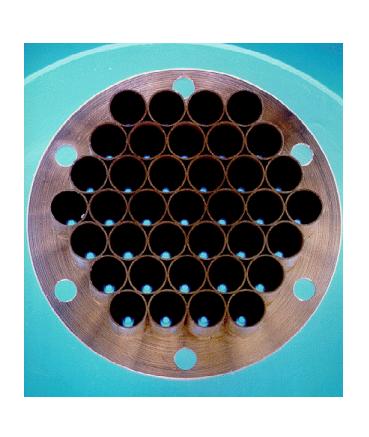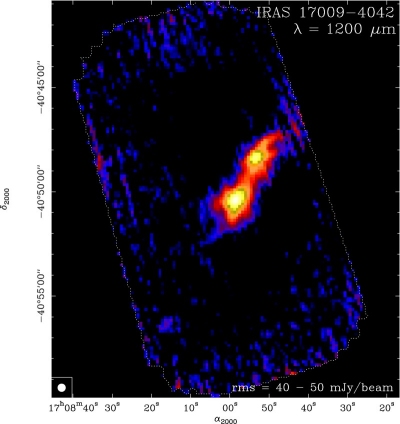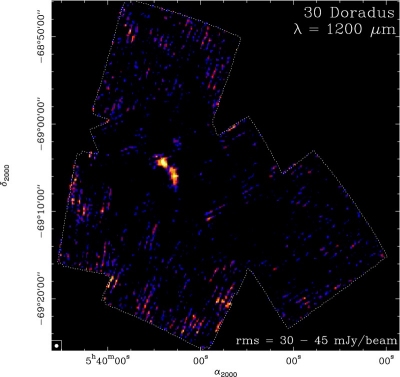
SIMBA
"Sest IMaging Bolometer Array"
Bochum (AIRUB)
MPIfR
Sweden
ESO
Fast Mapping
In fast mappping mode all 37 elements are DC biased. This requires scanning at high speeds. SIMBA allows a variety of map sizes and scan speeds. The standard map settings used during commissioning were scans in azimuth from 600" (minimum recommended scan length) to 1600" (this value can be in principle increased arbitrarily). The scans were separated in elevation by 8" (approximately a third HPBW); the number of scan lines is not limited anymore. A typical map of size 900" x 392" (50 scan lines) with a scan speed of 80"/s requires 15 minutes of observing time (including an overhead of 30%). The rms noise in such a map was determined to be about 40 mJy with a pixel binning of 8"; this value might improve in excellent weather conditions to about 30 mJy.ON-OFF
Due to the absence of a wobbling secondary, in the ON-OFF mode four pairs of AC biased elements are used to form four output channels. Each channel gives the differential signal between each pair. Thus, one channel is used for the object measurement, the remaining channels can be used to monitor and to reduce the sky fluctuations. The sensitivity for ON-OFF measurements is about 200 - 400 mJy per second^(1/2), achieved with the current reduction software. However, ON-OFF measurements are presently being implemented into MOPSI, the software used for SIMBA mapping. It has a better procedure to reject the correlated sky noise. Therefore, it is possible that the sensitivity will improve.


